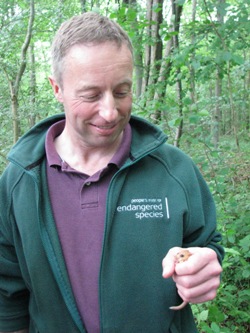Image courtesy of Susannah Penn
Following the successful reintroduction of rare hazel dormice (Muscardinus avellanarius) to an undisclosed woodland location in Nottinghamshire last year, the charity People’s Trust for Endangered Species (PTES) has also released 21 breeding pairs into another nearby wood, as part of a national programme to help this endangered species survive.
Despite their once widespread existence throughout much of England and Wales, the range and population of the dormouse has diminished significantly over the past 100 years, and the species is now rare and vulnerable to extinction. However, analysis from the National Dormouse Monitoring Programme (NDMP) – the world’s largest and longest running small mammal monitoring project which is managed by PTES and co-funded by Natural England – suggests that although dormice continue to decline, the rate of decline may be slowing.
This does not mean that dormice are ‘out of the woods yet’ though, and such reintroductions play an important role in UK dormouse conservation. Following a recent review of dormouse reintroductions by Natural England, PTES has carefully selected an appropriate release site this year, clustering it closely with last year’s location. Habitat such as woodland and hedgerows will be improved between the two sites so that as the two separate populations establish themselves in their respective woodlands, they will later have the opportunity to disperse and eventually join up. This will enhance the chance of long term viability for dormice in Nottinghamshire.

Ian White, Dormouse Officer at PTES, explained why dormouse reintroductions are part of the charity’s long-term conservation strategy for the species: “We cannot undo overnight the changes that have occurred in our countryside and rural practices over the last 100 years which have contributed to the decline of dormice. But with time and careful management we can create sustainable areas of woodland and hedgerows so that dormice can re-establish themselves and thrive.”
This year marks the 24th dormouse reintroduction by PTES at 19 different sites, with more than 750 dormice released across 12 English counties over the last 21 years.
The Nottinghamshire Wildlife Trust actively manages the woodland where the dormice are being released, ensuring the habitat offers suitable food and shelter for the released animals as well as wider range of wildlife, including birds, bats and insects.
You can check the distribution information held on the NBN Gateway for the dormouse here
